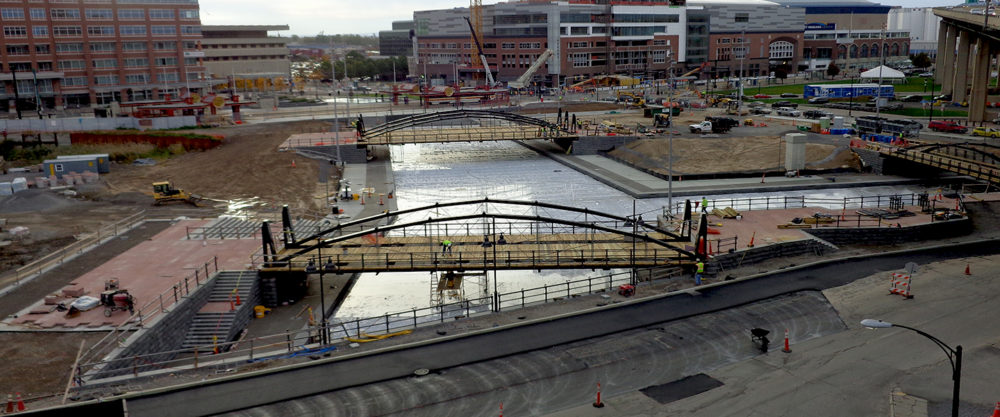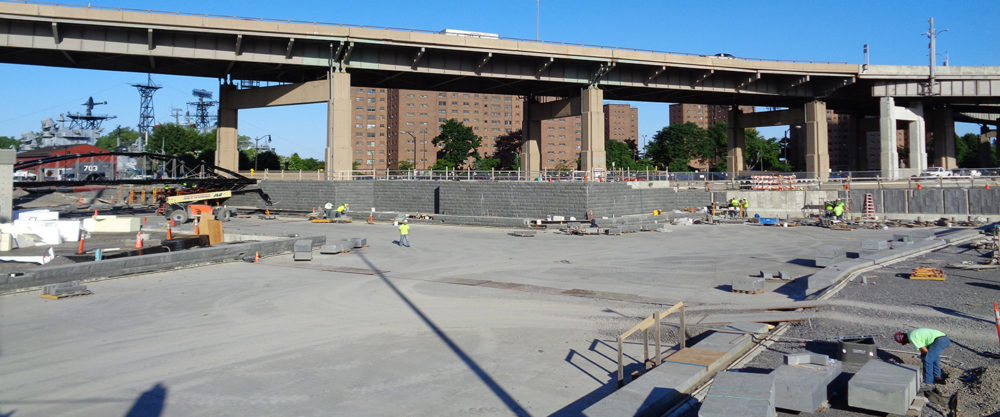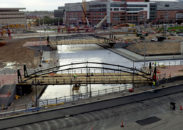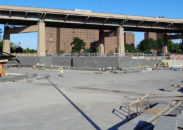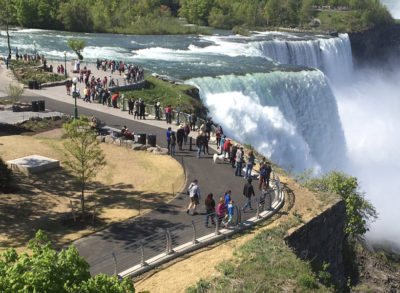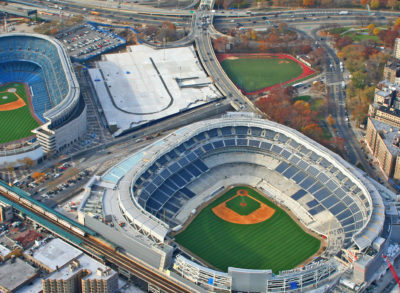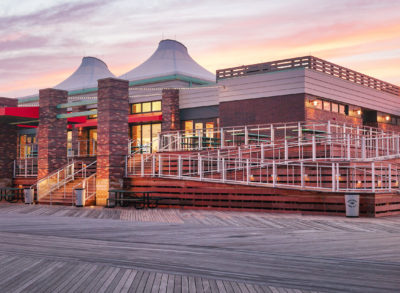Overview
LiRo-Hill was retained by the Erie Canal Harbor Development Corporation to perform construction management services for the development on the five-acre site, which was formerly the site of the Memorial Auditorium, as well as on an adjacent outparcel that was once the grounds of the Lehigh Valley Train Station. The central focus was the construction of public canals that reflect the alignment of the Historical Erie Canal, Hamburg Canal, and Commercial Slip. This redevelopment effort established a vibrant mixed-use waterfront destination in the city’s historic former canal district.
About the Project
Canalside is at the heart of Buffalo’s waterfront revitalization, located in the city’s downtown corridor at the intersection of Pearl Street and Marine Drive. The Erie Canal Harbor was originally built in 1825 as the western terminus of the Erie Canal. In its heyday, America’s “Gateway to the West” was one of the world’s greatest business centers, teeming with canal and rail traffic passing from the Atlantic seaboard across the Great Lakes. As a result of this prodigious commercial activity, by 1850 Buffalo was transformed from a small waterfront village into a thriving metropolis—eventually becoming the largest inland port in the nation as well as the unofficial grain capital of North America. The arrival of trains and automobiles in the early 20th century led to the ultimate demise of Erie Canal Harbor as a functional hub of commerce. Over time, the Erie Canal was filled in to make way for modern streets and civic buildings.
The harbor rested in this state until 2005, when the Erie Canal Harbor Development Corporation was formed, and the area was reclaimed for restoration as one of America’s brightest historical treasures.
The redeveloped area includes the recreation of several distinctive features of the original Canal district, such as the Commercial Slip, which served as the historic juncture between the Erie Canal and the Great Lakes; the wooden-plank Central Wharf, which stretched from the foot of Main Street to the Commercial Slip; the award-winning Whipple Truss foot bridge, which accurately resembles traditional canal spans and connects the Central Wharf to the cobblestone Commercial Street; prominent canal-era buildings, which house various naval and military artifacts; as well as the excavation site of the original Steamship Hotel building foundations, which are presented alongside several interpretive exhibits showcasing the historical significance of the Erie Canal.
Project Challenges & Solutions
LiRo-Hill overcame multiple subsurface field challenges in working with local contractors in order to install deep foundation systems over this historical urban site. Complex filtration and water treatment systems were installed and routed from underground mechanical rooms at both sites. LiRo-Hill also worked hand in hand with the owner’s A/E team in order to ensure that onsite quality control tolerances were met on all facets of these unique construction projects. In addition, the installation and workmanship of more than $2 million of custom-fabricated granite canal walls and site retaining walls were essential to recreate the canals.
Outcome
The historic canal harbor area redevelopment is now open to the public. The canals that were built to replicate the historic Erie Canal and Main-Hamburg Canals function as reflecting pools during the spring and summer months and transform into the largest outdoor ice skating rink in the winter months. Canalside hosts hundreds of events throughout the year, many of which are free or low cost to the public. Public events hosted at Canalside include concerts and festivals, summer fitness classes and ice skating, children’s programming, history tours, and outdoor winter activities.

